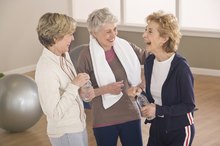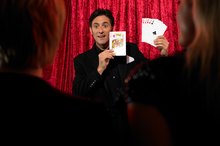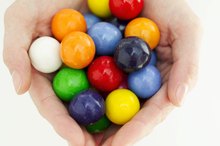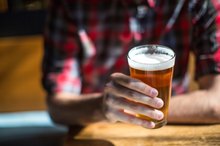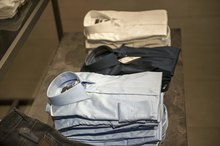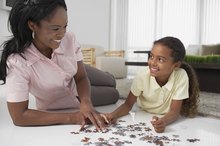Motivational Colors for Exercising
Whatever your motivation for exercising, there will be days when you need all the help you can get to pull on your sweats and hit the trail or the gym. Color your workout high-energy or low-stress to keep your fitness program on track. Color can affect your mood and your resistance to an exercise routine -- sometimes in ways you don't suspect.
Color and Your Brain
It may not be coincidence that your seated dumbbell press seems easier since you painted the exercise room blue. An article on Infoplease says that weightlifters in blue gyms can hoist heavier weights. Green improves vision and pink may drain energy -- bubblegum-pink rooms have been used to calm restless detainees in correctional institutions. A 2003 study for NeoCon by Kathie Engelbrecht, a Perkins & Will architect analyzing the impact of color on learning, cited research showing that color affects the cortex and the entire central nervous system. Color changes levels of alertness and energy and influences moods and mental clarity. When you're looking for motivation to exercise, consider that your walls can impact your workout.
Context and Culture
Color Therapy for Weight Loss
Learn More
Western culture assigns common meanings to specific colors that evoke intuitive reactions but they are often complex, according to Princeton Online. Yellow energizes people and relieves depression. But road hazard signs and traffic warning lights are yellow and the color name is slang for "fearful" or "chicken." Blue is calming and lowers respiration and blood pressure but it's also associated with depression. Red is exciting and raises your heart rate but can refer to violence or danger. Secondary colors fare somewhat better -- orange is dynamic, green reminds us of peaceful nature, and purple can signify serenity, spirituality and confidence. Temper the choice for stimulating or soothing colors in an exercise space with respect for the cultural associations that could affect the room's appeal. An all-white space is clean, spare and sophisticated but white is the color of death in Eastern cultures.
Shades and Saturation
The intensity of a color affects your reaction to it. Brightness and saturation can be motivation enhancing or energy dampening -- the same hue can inspire different reactions depending on how it is used. Bright colors tend to reflect light more than duller colors that absorb light. Baby blue is brighter than navy. Saturation refers to the purity of a color -- vivid orange is more saturated than terracotta. Dr. Sally Augustin, an environmental psychologist writing in "Psychology Today," says bright but not very saturated colors are more appealing and soothing while opposites on the color wheel -- like red and green -- create excitement. Big contrasts in saturation and brightness -- a tangerine wall in a pale blue room -- boost energy levels. Neighbors on the color wheel are relaxing, as are most monochromatic spaces that feature multiple shades of the same color. Monochromatic white or beige, exceptions to the rule, darken moods and create tension.
Red's Mixed Signals
Does What You Wear Affect Your Athletic Performance?
Learn More
Red stimulates your muscles to respond faster and more powerfully, according to a 008 research reported in "Personality and Social Psychology Bulletin." But that positive reaction is offset by the fact that red is a danger cue and other studies have shown that athletes tend to lose against opponents wearing red. Rochester University's Motivation Research Group determined that exposure to red before facing a challenge results in a high degree of avoidance behavior because of subconscious negative reactions to the color. The conflict between the short-term burst of high energy and the ingrained avoidance response indicates that red may not be your best color for inspiring consistent workout results.
Related Articles
References
- University of Rochester: "The Effect of Red on Avoidance Behavior in Achievement Contexts"
- Princeton Online: Color Symbolism and Culture
- Psychology Today: "Positive Design – Color!"
- Infoplease: Color Psychology
- Science Daily: Color Red Increases the Speed and Strength of Reactions
- University of Georgia College of Education: The Impact of Color on Learning
- The New York Times: Color Has a Powerful Effect on Behavior, Researchers Assert
Writer Bio
Benna Crawford has been a journalist and New York-based writer since 1997. Her work has appeared in USA Today, the San Francisco Chronicle, The New York Times, and in professional journals and trade publications. Crawford has a degree in theater, is a certified Prana Yoga instructor, and writes about fitness, performing and decorative arts, culture, sports, business and education .


